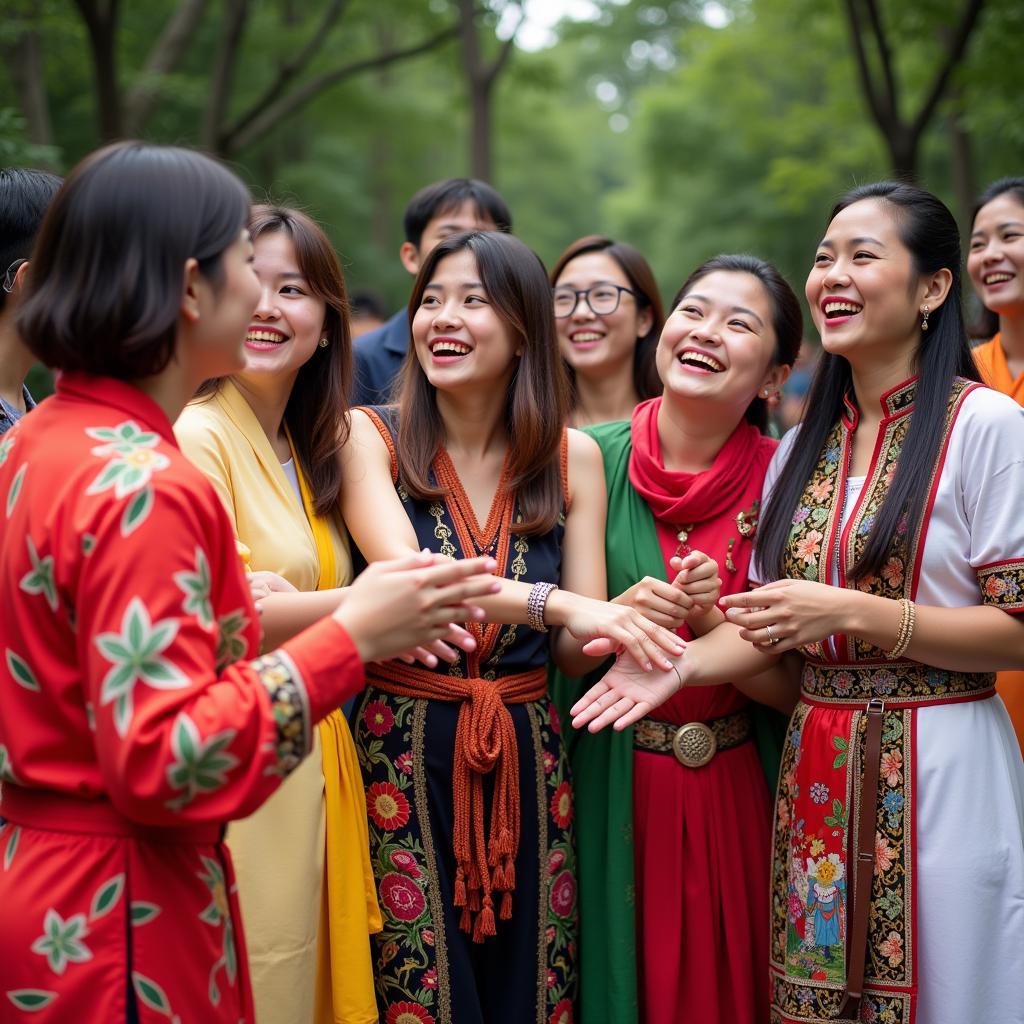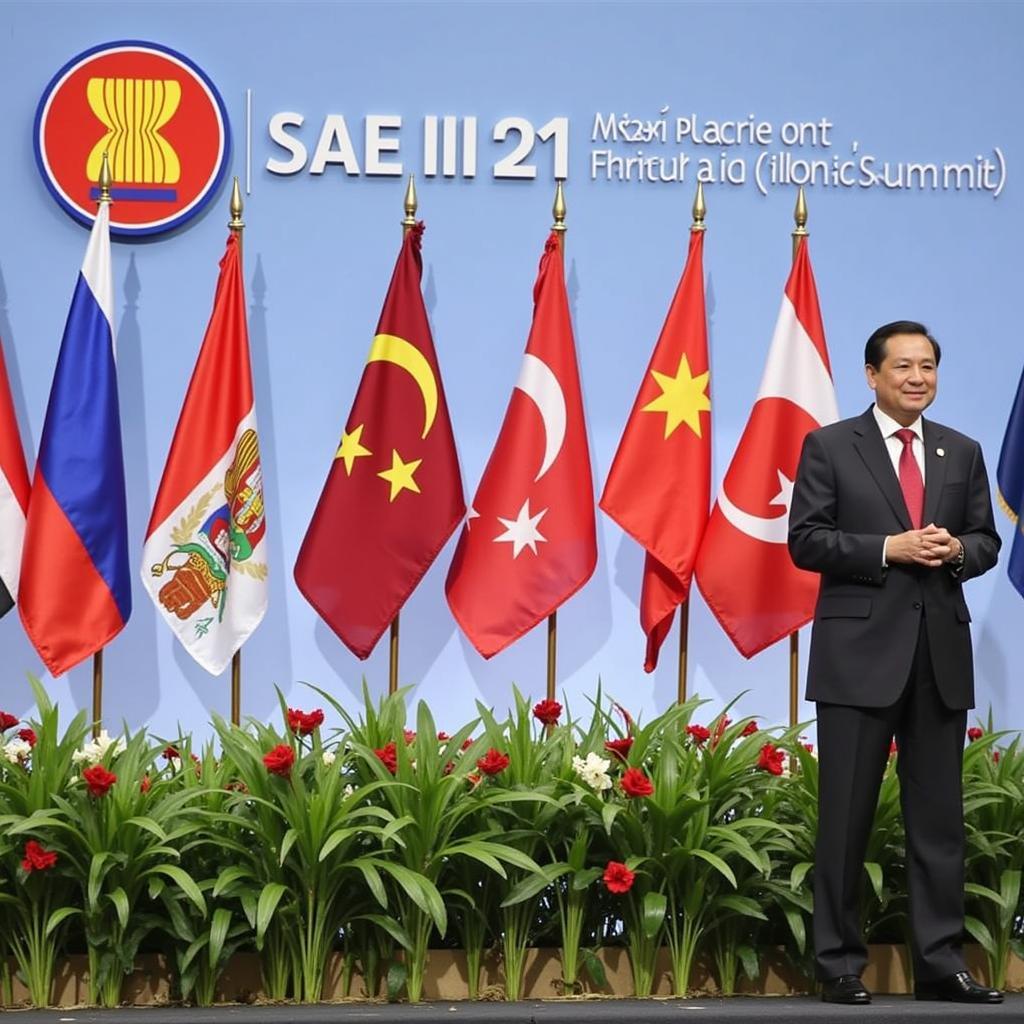The Ase Colors, often searched online as “ASE colours,” hold a significant meaning for the Southeast Asian region. They represent not only the visual identity of the Association of Southeast Asian Nations (ASEAN) but also the shared values, aspirations, and cultural richness of its diverse member states.
 ASEAN flag with vibrant colors
ASEAN flag with vibrant colors
The Meaning Behind Each ASE Color
The four official ASE colors, blue, red, white, and yellow, each carry a distinct symbolism:
- Blue: Represents peace, stability, and harmony, reflecting ASEAN’s commitment to regional cooperation and peaceful coexistence.
- Red: Symbolizes courage, dynamism, and progress, highlighting the region’s determination to overcome challenges and strive for advancement.
- White: Stands for purity, transparency, and good governance, signifying ASEAN’s pursuit of ethical principles and accountability.
- Yellow: Represents prosperity, abundance, and hope, signifying the shared vision of a brighter future for all Southeast Asians.
 People from different ASEAN countries celebrating their cultural diversity
People from different ASEAN countries celebrating their cultural diversity
These colors are not merely aesthetic choices; they are deeply rooted in the cultural heritage of Southeast Asia. Many national flags in the region feature these colors, demonstrating their shared historical significance and cultural resonance. For example, the ASE colour blue is found in the flags of Thailand, Malaysia, and Laos, while red is prominent in the flags of Vietnam, Singapore, and Indonesia.
The ASE Colors in Action
The ASE colors are prominently featured in various ASEAN symbols and platforms:
- ASEAN Flag: The emblem, a bundle of ten rice stalks in yellow, is set against a blue background, embodying the unity and shared prosperity of its member states.
- ASEAN Logo: The logo often incorporates all four colors, representing the organization’s multi-faceted approach to regional cooperation.
- ASEAN Website and Publications: The website and official documents frequently use the ASE palette to create a cohesive and recognizable brand identity.
 The ASEAN logo displayed prominently at an international summit
The ASEAN logo displayed prominently at an international summit
Beyond official use, the ASE colors have also been adopted by the wider Southeast Asian community. Businesses incorporate them into their branding to showcase their regional roots, while individuals use them to express their cultural pride. The ASE palette has become a visual shorthand for Southeast Asian identity, instantly recognizable and widely embraced.
More Than Just Colors: A Reflection of Shared Values
“The meaning behind the ASE colors goes beyond mere aesthetics,” says Dr. Maya Sulastri, a cultural anthropologist specializing in Southeast Asia. “These colors encapsulate the spirit of ASEAN – its commitment to peace, its drive for progress, and its vision for a prosperous and harmonious region.”
The ASE colors remind us that despite the region’s cultural and linguistic diversity, Southeast Asian nations are bound by a common history, shared values, and a collective aspiration for a brighter future. They serve as a powerful symbol of unity and a reminder of the strength that lies in collaboration and mutual respect.
Conclusion
The ASE colors are more than just a visual element; they are a powerful representation of the spirit of Southeast Asia. They embody the region’s commitment to peace, its pursuit of progress, and its vision for a shared future. As ASEAN continues to grow in prominence on the global stage, the ASE colors will continue to serve as a beacon of unity, a symbol of shared identity, and a reminder of the strength that lies in diversity.
FAQ
1. What do the ASE colors stand for?
The ASE colors, blue, red, white, and yellow, represent peace, courage, purity, and prosperity, respectively, reflecting the core values and aspirations of ASEAN.
2. Where can I find the official ASE color codes?
You can find the official ASE color codes on the ASEAN website and in the organization’s brand guidelines.
3. How are the ASE colors used?
The ASE colors are prominently featured in the ASEAN flag, logo, website, publications, and various other platforms to create a cohesive and recognizable brand identity.
4. Can anyone use the ASE colors?
While the ASE colors are primarily associated with ASEAN, their use is not restricted. Businesses and individuals often incorporate them into their branding and activities to express their connection to Southeast Asia.
5. What is the significance of the rice stalks in the ASEAN emblem?
The ten rice stalks in the ASEAN emblem represent the ten member states of the organization, symbolizing unity, prosperity, and the shared cultural heritage of Southeast Asia.
For more information on ASEAN and its symbols, you can refer to the following:
Need help with understanding more about ASEAN? Please reach out to us at Phone Number: 0369020373, Email: aseanmediadirectory@gmail.com. You can also visit us at: Thôn Ngọc Liễn, Hiệp Hòa, Bắc Giang, Việt Nam. We have customer service representatives available 24/7 to assist you.